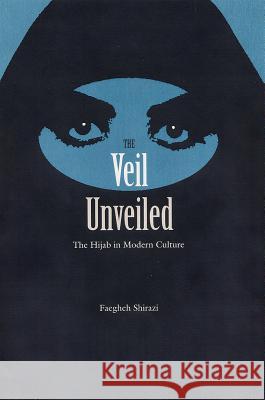The Veil Unveiled: The Hijab in Modern Culture » książka
The Veil Unveiled: The Hijab in Modern Culture
ISBN-13: 9780813026985 / Angielski / Miękka / 2003 / 240 str.
The Veil Unveiled: The Hijab in Modern Culture
ISBN-13: 9780813026985 / Angielski / Miękka / 2003 / 240 str.
(netto: 90,32 VAT: 5%)
Najniższa cena z 30 dni: 94,57
ok. 16-18 dni roboczych
Dostawa w 2026 r.
Darmowa dostawa!
"An original contribution to a subject which is currently of much interest to the world at large, East or West, and has an important bearing on the position of women in the societies in which veiling is practiced."--The Middle East Journal "Highly recommended. . . . It draws on and contributes to current feminist theorizing in Middle East women's studies and in broader feminist academic circles."--International Journal of Middle East Studies "A welcome contribution to Middle Eastern and women's studies, providing an innovating approach and research to a highly controversial issue in gender politics."--Digest of Middle East Studies An insightful and provocative book. . . . It] leads to a better understanding of the veil and a debunking of current cliches." -Farzaneh Milani, University of Virginia Illustrated with photographs, drawings, and cartoons gathered from popular culture, this provocative book demonstrates that the veil, the garment known in Islamic cultures as the hijab, holds within its folds a semantic versatility that goes far beyond current cliches and homogenous representations. Whether seen as erotic or romantic, a symbol of oppression or a sign of piety, modesty, or purity, the veil carries thousands of years of religious, sexual, social, and political significance. Using examples from both the East and West-including Persian poetry, American erotica, Iranian and Indian films, and government-sanctioned posters-Faegheh Shirazi shows that the veil has become a ubiquitous symbol, utilized as a profitable marketing tool for diverse enterprises, from Penthouse magazine to Saudi advertising companies. She argues that perceptions of the veil change with the cultural context of its use as well as over time: in a Hindi movie the veil draws in the male gaze, in an Iranian movie it denies it; photographs of veiled women in Playboy aim to titillate a principally male audience, while cartoons of veiled women in the same magazine mock and ridicule Muslim society. Shirazi concludes that the practice of veiling, encompassing an amazingly rich array of meanings, has often become a screen upon which different people in different cultures project their dreams and nightmares."











